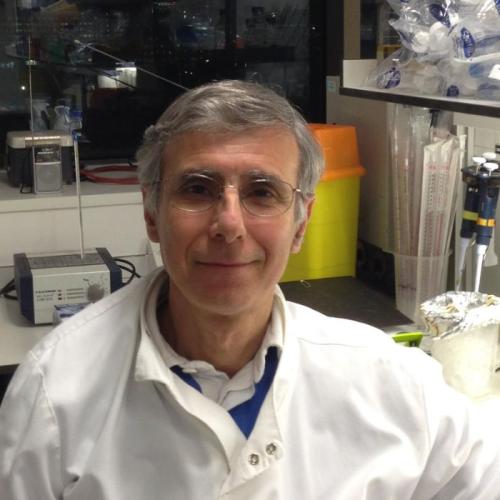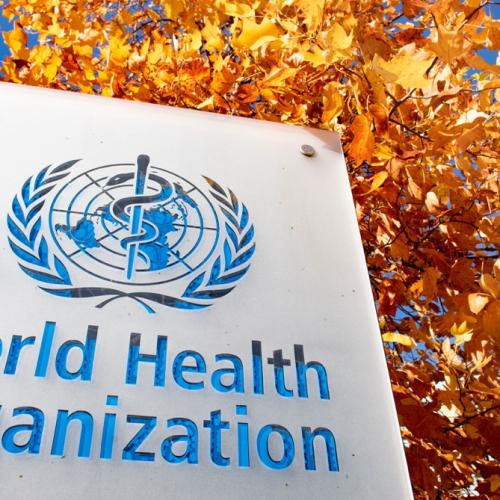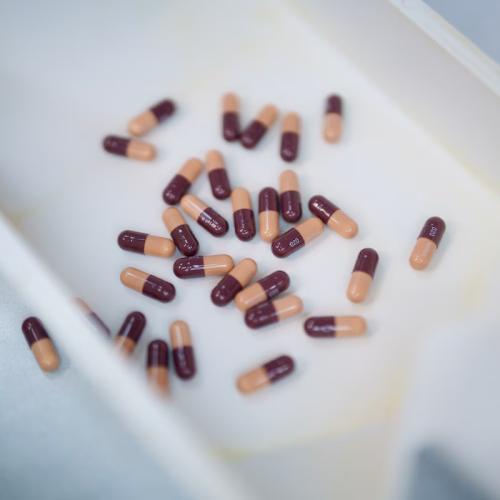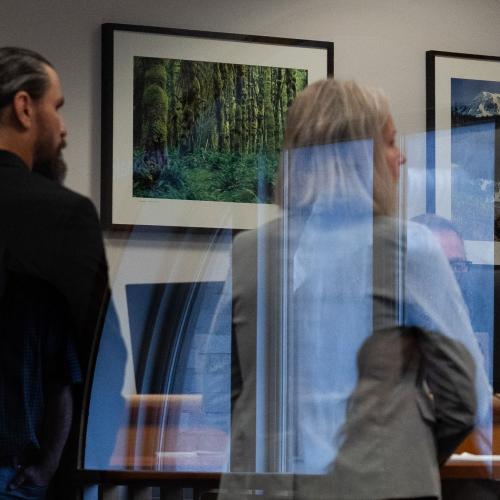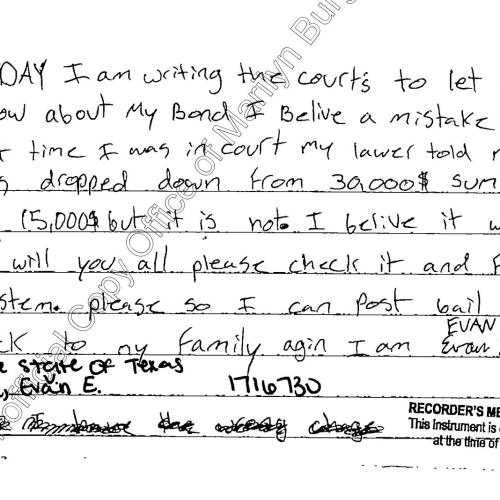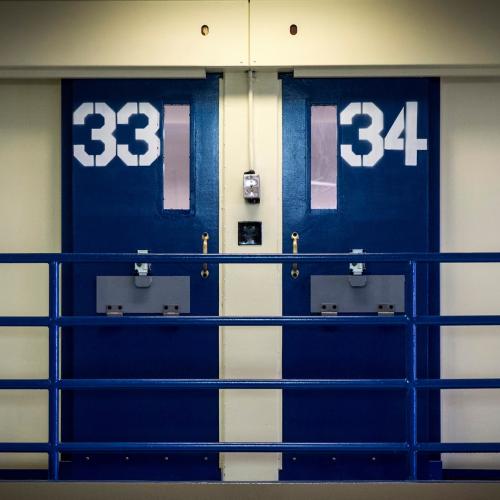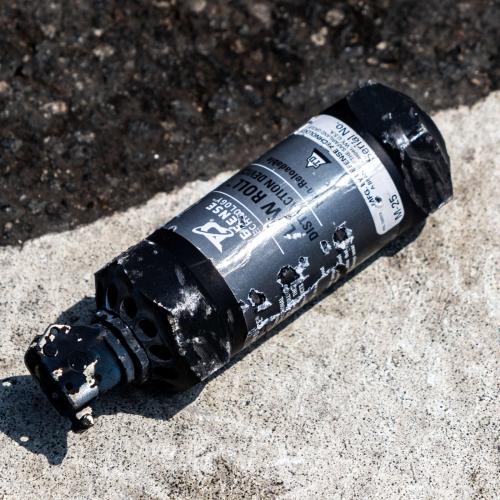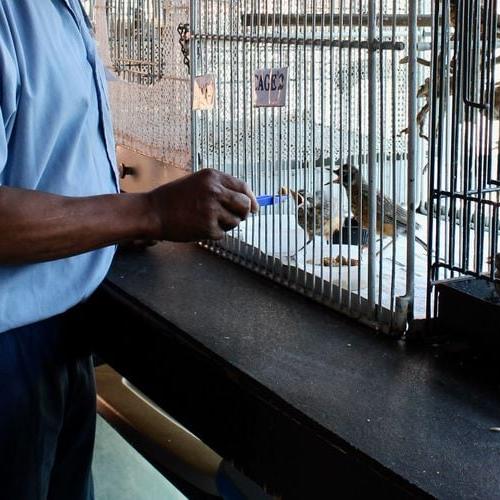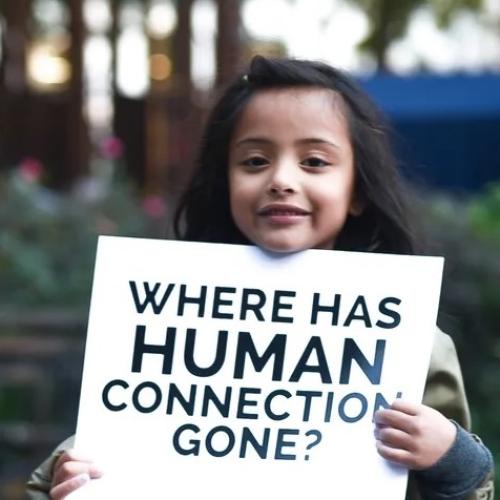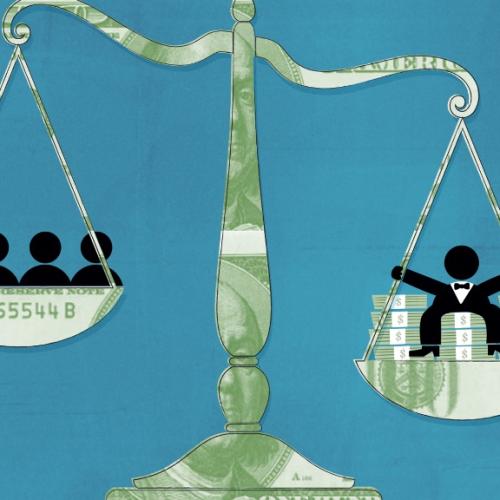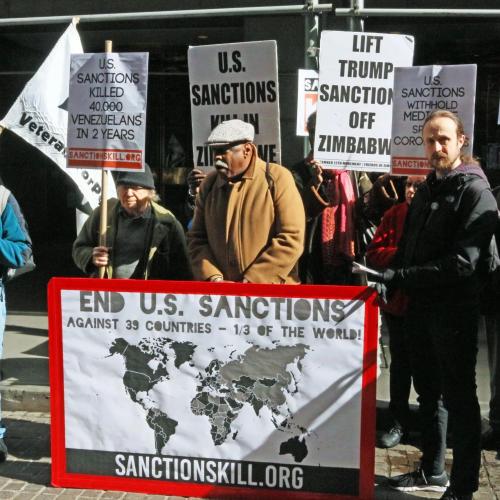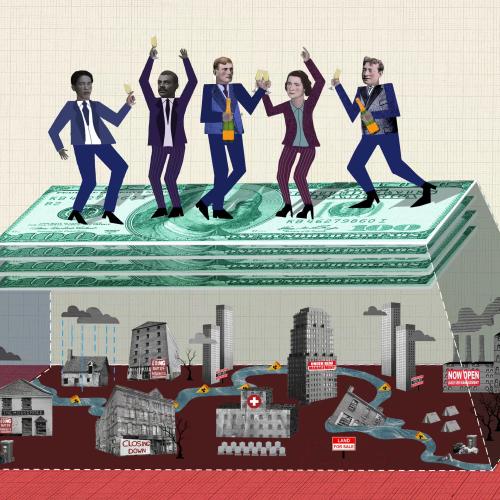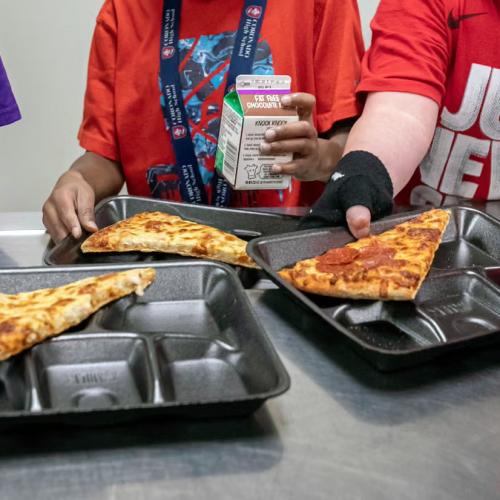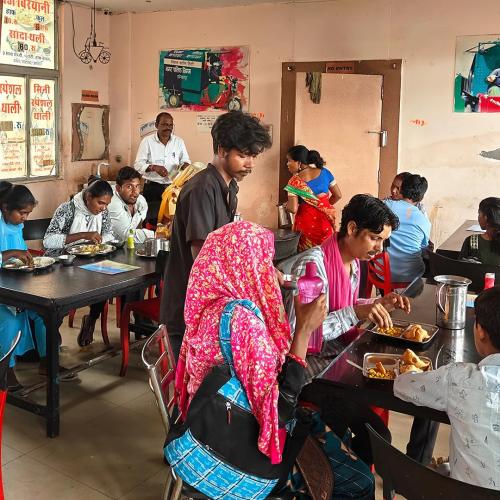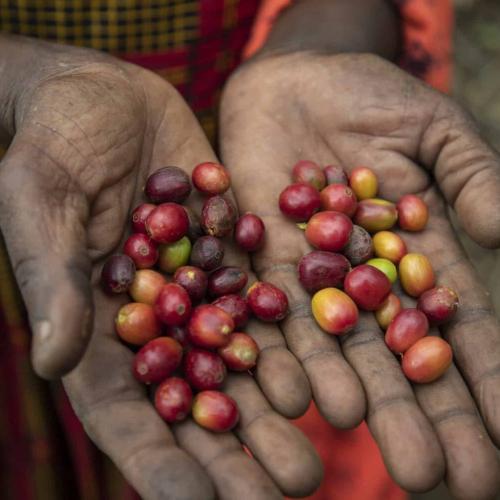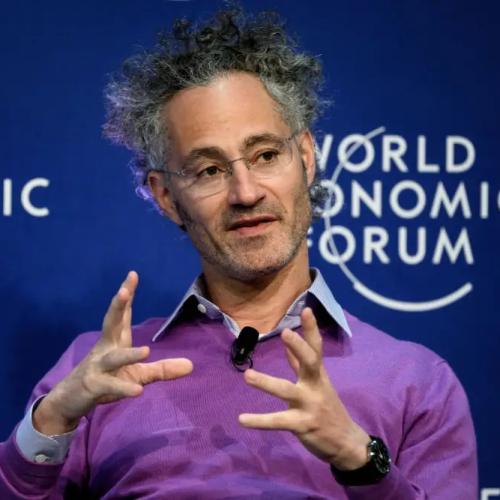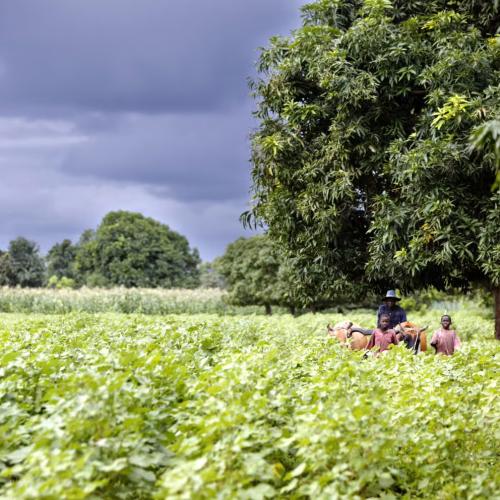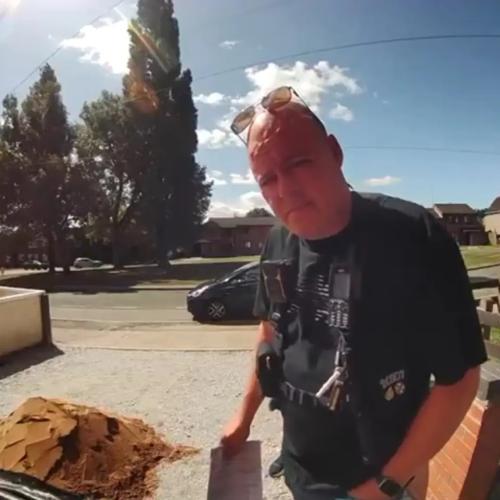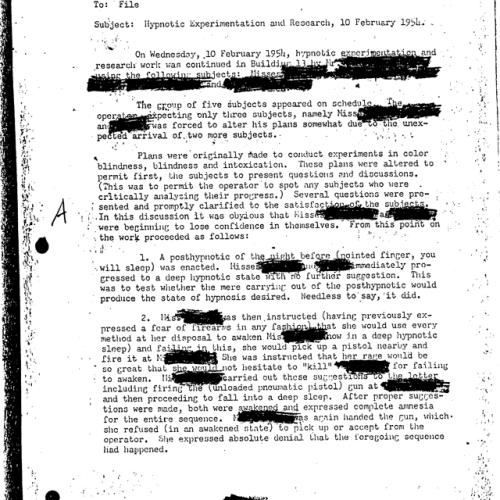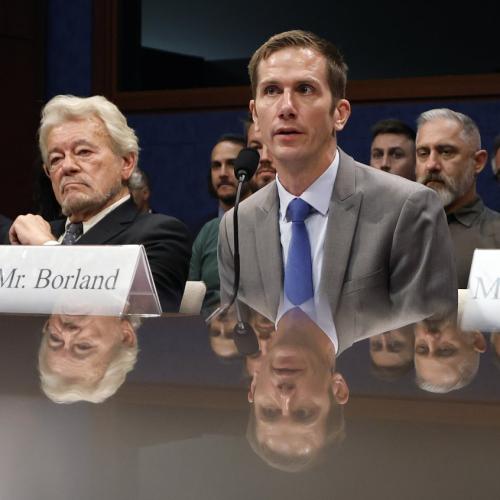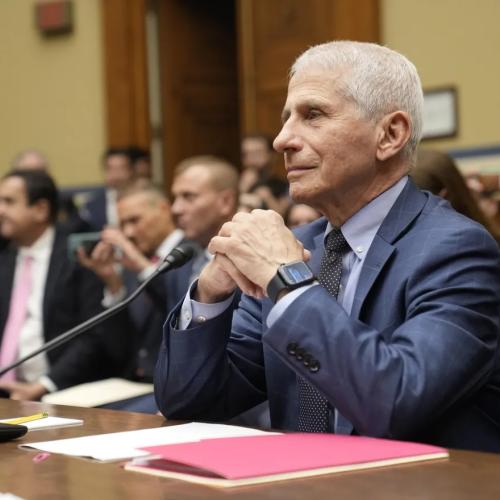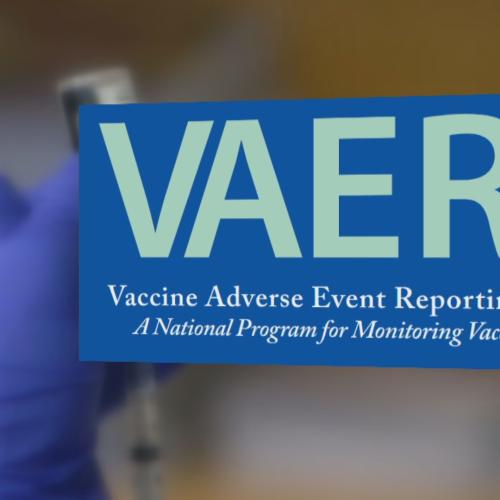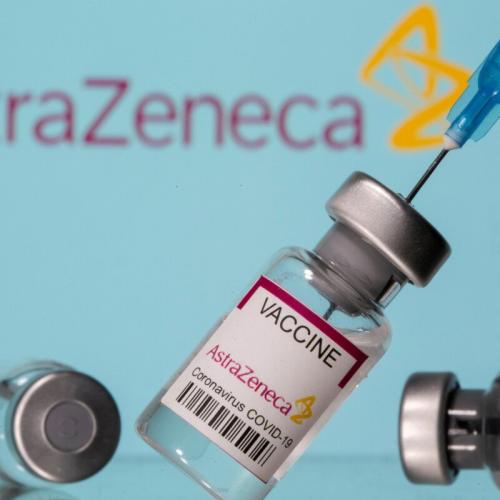Inspirational News Articles
Below are key excerpts of some of the most inspiring news articles from reliable news media sources. If any link fails to function, a paywall blocks full access, or the article is no longer available, try these digital tools.
For further exploration, delve into our Inspiration Center.
A practice called social prescribing is being explored in the United States, after being adopted in more than 20 other countries. Social prescriptions generally aim to improve health and well-being by connecting people with nonclinical activities that address underlying problems, such as isolation, social stress and lack of nutritious food, which have been shown to play a crucial role in influencing who stays well and for how long. For Ms. Washington, who is among thousands of patients who have received social prescriptions from the nonprofit Open Source Wellness, the experience was transformative. She found a less stressful job, began eating more healthfully and ... was able to stop taking blood pressure medication. At the Cleveland Clinic, doctors are prescribing nature walks, volunteering and ballroom dancing. In Newark, an insurance provider has teamed up with the New Jersey Performing Arts Center to offer patients glassblowing workshops, concerts and museum exhibitions. A nonprofit in Utah is connecting mental health patients with community gardens and helping them participate in other activities that bring them a sense of meaning. Universities have started referring students to arts and cultural activities like comedy shows and concerts. Research on social prescribing suggests that it can improve mental health and quality of life and that it might reduce doctor visits and hospital admissions.
Note: Explore more positive stories like this about healing our bodies and healing social division.
Although it happened more than 60 years ago, Antonio Salazar-Hobson remembers every detail of his kidnapping. After being snatched from his back yard, he is taken into a nightmarish landscape of sex trafficking, violence and exploitation. Rather than being broken by what he experienced, he instead rose from the ashes of his stolen childhood to accomplish extraordinary academic feats and become one of the US’s most successful labour rights attorneys, representing vulnerable and powerless communities, and dedicating his life to justice and compassion. “I chose not to be obliterated by the abuse and trauma I was forced to endure,” he says. “Instead of being swallowed by the darkness, I survived by walking towards the light.” He has taken on multibillion-dollar corporations, represented First Nation people and LGBTQ+ farm worker communities, and won every case. “I’m used to people underestimating me, this poor Chicano boy going up against rooms full of corporate lawyers in suits, but I always prevail,” he says. He now plans to dedicate the rest of his life to the anti-trafficking movement. “It is my hope that somehow my story can be of service to the community of survivors of sexual assault and trafficking; what happened to me can show other kids that they don’t have to be ashamed, that they can rise up to become whoever they want to be. I want to show them that I refused to be broken and, in the end, I ... made it home.”
Note: Explore more positive stories about ending human trafficking.
The issue of abortion has neatly cleaved the Polish political class, yet researchers find that Poles themselves feel much more empathy around it than their elected leaders. And the idea that people hold compassion around many divisive issues presents an opportunity to bridge a societal divide, says Zofia Wodarczyk, a researcher at the social science think tank More in Common, which published a study. “We basically only talk [in politics] about abortion – are you for, or are you against, but there’s so much in between that’s gray,” she says. And when she and her colleagues interviewed voters of all stripes, they saw the gray. Even among the most staunchly conservative, religious group – about 6% of those surveyed – about a third of men and women surveyed would support someone close to them getting an abortion. The vast majority of Polish men and women of all persuasions oppose punishing women who choose abortion. Anna Wójcik, a legal scholar ... says people are ready to move past what she calls “civil war conditions,” after eight years in which the conservative majority questioned loyalty to country for simply expressing divergent views. “I feel that Polish people are tired of this polarizing political scene and division,” says Ms. Wójcik. “Basically people want to move forward, to be able to discuss topics in democracy that we have conflicting views on, like energy transition and education and stuff like that.”
Note: Explore more positive stories like this about healing social division.
From a Tampa performing arts conservatory comes the story of a blind jazz saxophonist who uses his disability as a teaching tool. He encourages his students to act on instinct; to feel the music through their instruments, and not let the waking world deceive them. “Welcome to every day of my life,” says Matthew Weihmuller in his jazz improvisation class after turning the lights off. “Then we have a big laugh,” he adds. When Weihmuller started playing, he needed braille sheet music, and pieces would take months; even years to learn. As if that weren’t difficult enough, few people in the country were capable of providing braille music, so he started “brailling” his own, with the help of his mom. “They can’t look at their instrument. Now, they have to feel their instrument with their fingers and hands, right?” Weihmuller told Fox 13. “Now, we’ve got to listen to the music. We can’t read it. It forces the students to use their other senses.” During improvisational sessions, a musician has to be ready for sudden changes in time signature or key. This is nearly impossible to express through sheet music. At least in this regard, the children are learning in the best way for this unorthodox, yet traditional form of jazz music. As an educator with blindness, Weihmuller stresses turning any disadvantage into an advantage, a teaching philosophy that has led some students to tell the man that he has changed the way they look at life.
Note: Read more inspiring news articles on the power of art. For more, explore our uplifting Inspiration Center, which focuses on solutions and the best of humanity and life.
On the outskirts of Austin, Texas, what began as a fringe experiment has quickly become central to the city’s efforts to reduce homelessness. To Justin Tyler Jr., it is home. Mr. Tyler, 41, lives in Community First! Village, which aims to be a model of permanent affordable housing for people who are chronically homeless. In the fall of 2022, he joined nearly 400 residents of the village, moving into one of its typical digs: a 200-square-foot, one-room tiny house furnished with a kitchenette, a bed and a recliner. Eclectic tiny homes are clustered around shared outdoor kitchens, and neat rows of recreational vehicles and manufactured homes line looping cul-de-sacs. There are chicken coops, two vegetable gardens, a convenience store ... art and jewelry studios, a medical clinic and a chapel. In the next few years, Community First is poised to grow to nearly 2,000 homes across three locations, which would make it by far the nation’s largest project of this kind, big enough to permanently house about half of Austin’s chronically homeless population. Many residents have jobs in the village, created to offer residents flexible opportunities to earn some income. Last year, they earned a combined $1.5 million working as gardeners, landscapers, custodians, artists, jewelry makers and more. Ute Dittemer, 66, faced a daily struggle for survival during a decade on the streets before moving into Community First five years ago with her husband. Now she supports herself by painting and molding figures out of clay at the village art house. A few years ago, a clay chess set she made sold for $10,000 at an auction. She used the money to buy her first car.
Note: Explore more positive stories like this in our comprehensive inspiring news articles archive focused on solutions and bridging divides.
Direct cash programs are growing across America, offering a path out of poverty through economic mobility. During a two-week period in 2022, nearly a quarter of a million people in the Chicago area applied for the Cook County Promise Guaranteed Income Pilot, the nation's largest direct cash pilot, and ultimately 3,250 families were randomly selected to get $500 a month for two years. Similar direct cash initiatives have changed the physical, emotional, and economic lives of families that participate. Children are better cared for, and they excel in school. Adults experience improved health and stronger familial relationships. And crucially, when recipients have economic stability, they can plan and invest in their futures—many, for the first time in their lives. The Stockton SEED project, which gave $500 a month for two years to 130 people, saw results that mirrored prior direct cash research. The study ... found that the expansion of finances and the predictable, stable source of income brought by the program created "self-determination and capacity for risk-taking not present prior," meaning that when participants could predictably afford child care, transportation, and training programs they had the financial freedom to invest in their own futures. People have big ambitions, no matter the size of their bank account. For most Americans facing economic struggles, their chief problem is a lack of cash, and not a lack of character.
Note: Explore more positive stories like this in our comprehensive inspiring news articles archive focused on solutions and bridging divides.
It all started in 2019, when Bjartmar Leósson started to see a rise in bike theft in Reykjavík. The bus driver and self-confessed “bike nerd” decided to start tracking them down and returning them to their rightful owners. Four years and, he estimates, hundreds of salvaged bikes later, the 44-year-old has developed a reputation in the Icelandic capital among cyclists and potential bike thieves. Known as the Reykjavík “bike whisperer”, people across his home city turn to him for help to find their missing bicycles, tools and even cars. Often, he says, bike thieves hand over bikes without being asked and some former bike thieves have started to help him. Now when somebody loses their bike it can take as little as 48 hours to track it down on his Facebook page, Hjóladót ofl. tapað fundið eða stolið (Bicycle stuff etc lost, found or stolen), updated every few hours with missing and found items and which has more than 14,500 members. “It’s not only me,” he says. “Many times someone sees a bike hidden in a bush, takes a picture and then someone else comments ‘hey that’s my bike’. So everyone’s looking out.” Now when people’s bikes get stolen, he says, the police direct them to his Facebook page. When there is a finder’s fee he gives it to people living in [a homeless] shelter. "Now when I see these guys on a stolen bike, I just talk to them very peacefully and calmly. The other day I talked to one of these guys and didn’t even mention the bike, I just basically said: tell me your story,” he says. At the end of the conversation, the man handed him the bike.
Note: Explore more positive stories like this in our comprehensive inspiring news articles archive focused on solutions and bridging divides.
In most of Europe, fitting a heat pump is one of the most powerful actions a person can take to reduce their carbon footprint. But in Norway, where clean-yet-inefficient electrical resistance heaters have long been common, upgrading to a heat pump is often a purely financial decision. Two-thirds of households in this Nordic country of 5 million people have a heat pump, more than anywhere else in the world. For many years, Norwegians and their neighbours heated their homes with fossil fuels. But during the 1973 oil crisis, when prices shot up, the country’s political leaders made a conscious choice to promote alternatives. “Norway ensured early on that fossil-fuel heating was the most expensive option, making heat pumps cost competitive,” said Dr Jan Rosenow from the Regulatory Assistance Project, a thinktank that works to decarbonise buildings. “They did this by taxing carbon emissions from fossil heating fuels. That’s been the key to incentivise heat pump adoption.” Norway also trained up a workforce to install them. Heat pumps’ efficiency has been increased over decades, partly because of the early adopters in Nordic countries who tinkered away to the point where a modern version can deliver three to five units of heat for every unit of electricity used to power it. An efficient gas boiler, on the other hand, can only produce as much heat as the energy contained in the fuel being burned. A heat pump will have a smaller carbon footprint than a gas boiler even when plugged into an electricity grid.
Note: Explore more positive stories like this in our comprehensive inspiring news articles archive focused on solutions and bridging divides.
The influential idea that in the past men were hunters and women were not isn’t supported by the available evidence. Women are physiologically better suited than men to endurance efforts such as running marathons. This advantage bears on questions about hunting because a prominent hypothesis contends that early humans are thought to have pursued prey on foot over long distances until the animals were exhausted. Furthermore, the fossil and archaeological records, as well as ethnographic studies of modern-day hunter-gatherers, indicate that women have a long history of hunting game. Females are ... dominating ultraendurance events such as the more than 260-mile Montane Spine foot race through England and Scotland, the 21-mile swim across the English Channel and the 4,300-mile Trans Am cycling race. In 2018 English runner Sophie Power ran the 105-mile Ultra-Trail du Mont-Blanc race in the Alps while still breastfeeding her three-month-old at rest stations. Observations of recent and contemporary foraging societies provide direct evidence of women participating in hunting. The most cited examples come from the Agta people of the Philippines. Agta women hunt while menstruating, pregnant and breastfeeding, and they have the same hunting success as Agta men. They are hardly alone. A recent study of ethnographic data spanning the past 100 years ... found that women from a wide range of cultures hunt animals for food.
Note: Explore more positive stories like this in our comprehensive inspiring news articles archive focused on solutions and bridging divides.
California has become the first U.S. state to outlaw the use of four potentially harmful food and drink additives that have been linked to an array of diseases, including cancer, and are already banned in dozens of countries. The California Food Safety Act prohibits the manufacturing, distribution and sale of food and beverages that contain brominated vegetable oil, potassium bromate, propylparaben and red dye 3 — which can be found in candy, fruit juices, cookies and more. The Food and Drug Administration banned the use of red dye 3 in cosmetics in 1990 after evidence showed it caused cancer in lab animals. But the government hasn't prohibited its use in food, and it's an ingredient in candies. Brominated vegetable oil and potassium bromate have also been associated with harmful effects on the respiratory and nervous systems, while propylparaben may negatively impact reproductive health. The proposal has been the target of a false claim that California is attempting to ban Skittles. In fact, Assemblymember Jesse Gabriel, a Democrat who sponsored the bill, has said that Skittles are sold with alternative ingredients in the European Union, where the four additives are already banned. "It's unacceptable that the U.S. is so far behind the rest of the world when it comes to food safety," Gabriel said in a statement. In addition to the EU, countries that have banned the four additives in food include the United Kingdom, Canada, Australia, New Zealand, China and Japan.
Note: Explore more positive stories like this in our comprehensive inspiring news articles archive focused on solutions and bridging divides.
Ray, a man in his 50s, used to live in an emergency homeless shelter in Vancouver, Canada. Then he participated in a study that changed his life. The newly published, peer reviewed PNAS study, conducted by the charity Foundations for Social Change in partnership with the University of British Columbia, was fairly simple. It identified 50 people in the Vancouver area who had become homeless in the past two years. In spring 2018, it gave them each one lump sum of $7,500 (in Canadian dollars). And it told them to do whatever they wanted with the cash. Over the next year, the study followed up with the recipients periodically, asking how they were spending the money and what was happening in their lives. The recipients of the cash transfers did not increase spending on drugs, tobacco, and alcohol, but did increase spending on food, clothes, and rent. What’s more, they moved into stable housing faster and saved enough money to maintain financial security over the year of follow-up. “Counter to really harmful stereotypes, we saw that people made wise financial choices,” Claire Williams, the CEO of Foundations for Social Change, [said]. What’s more ... giving out the cash transfers in the Vancouver area actually saved the broader society money. Enabling 50 people to move into housing faster saved the shelter system $8,277 per person over the year, for a total savings of $413,850. That’s more than the value of the cash transfers, which means the transfers pay for themselves.
Note: Explore more positive stories like this in our comprehensive inspiring news articles archive focused on solutions and bridging divides.
Michael Tubbs had just been elected the youngest and first Black mayor of Stockton, California, when he announced his intention to launch what would be the country’s first universal basic income program in decades. The year was 2017, and the plan was to pay some residents $500 a month, no strings attached. In the years since his announcement ... the 125 participants of the Stockton program showed that they used that extra $500 a month not for luxuries or frivolities, but to pay off debt, obtain full-time jobs and get medical treatment like dental work that they had put off for years because they could not afford it. Now, more than 100 cities and jurisdictions around the country have launched their own guaranteed income programs. The basis of guaranteed income is simple: poverty, a problem at the crux of so many societal woes, can be solved with money and it is the government’s job to solve it. It’s a guaranteed monthly income without the requirements that come with a welfare program – requirements that often keep recipients in poverty when the program benefits outweigh any job or income advancement they could make. “We’re talking about like life-changing impacts for a very small amount of dollars, in the grand scheme of things,” Tubbs said. The Stockton program was originally funded by a grant from the Economic Security Project, but some programs today are drawing directly from their governmental budgets.
Note: A documentary about the Stockton program titled "It's Basic" was recently featured at the Tribeca Film Festival. Explore more positive stories like this in our comprehensive inspiring news articles archive focused on solutions and bridging divides.
Why do we care about rhythm? It connects us to the world. It plays a role in listening, in language, in understanding speech in noisy places, in walking, and even in our feelings toward one another. Rhythm is much more than a component of music. We experience the rhythmic changes of the seasons. Some of us have menstrual cycles. We have circadian rhythms – daily cycles of mental and physical peaks and troughs. Tides, 17-year cicadas, lunar phases, perigees, and apogees are other naturally occurring rhythms. Human-made rhythms include the built world – street grids, traffic lights, crop fields, mowed designs in baseball diamond outfields, the backsplash behind the kitchen counter, spatial patterns in geometric visual artforms. Rhythms in the brain have been called out as a basis for consciousness itself. Even in very young children, being (literally) "in sync" with another person engenders positive feelings toward them. Music in general, and rhythm in particular, does an uncommonly good job fostering a sense of community. Indeed, music being played at negotiation sessions helps to smooth the conversations and leads to breakthroughs and compromises. Musicians Without Borders is used to form relationships in troubled regions around the world, to bring hope, comfort, and healing to diverse populations. The Resonance Project and the Jerusalem Youth Chorus, which are forming bonds between Israeli and Palestinian children, are other examples of using musical rhythm to overcome differences.
Note: Explore more positive stories like this in our comprehensive inspiring news articles archive focused on solutions and bridging divides.
Memorial Day used to be Israel’s most sacred secular holiday because it honored those who died in wars or terrorist attacks. I attended one memorial service in Tel Aviv that rose above these tensions and penetrated to the heart of the issues troubling the country: a meeting of Israeli and Palestinian families who had lost relatives to the conflict and gathered together to share their grief. What was most astonishing about the event was to see the Palestinians fall into the arms of their Israeli hosts and hold on tightly. Why astonishing? Because these days, Palestinians and Israelis almost never come into contact, except at Israeli military checkpoints on the West Bank, or when violent Israeli settlers attack their fields — or when Palestinian workers come to Israel to work in construction or in agriculture. It was moving in the extreme to see Palestinians and Israelis who had experienced heartbreak at the hands of the other side embrace each other tightly and talk about family. It was also moving to watch thousands of Israelis file into the fenced-off area of the ceremony and fill endless rows of plastic chairs (the organizers say that 300,000 watched online). They listened in total silence as Israeli Jews and Palestinian Muslims told their personal stories on the stage. Yuval Sapir, whose sister Tamar was murdered in Tel Aviv in 1994 by a Palestinian suicide bomber ... choked out these words: “It is easy and natural to hate ... I chose to try to break the chain of revenge and hatred.”
Note: Explore more positive stories like this in our comprehensive inspiring news articles archive focused on solutions and bridging divides.
There are over 4,100 private companies in the U.S. profiting off of mass incarceration, which is a multi-billion-dollar business. With an incarcerated population of 2.2 million, the U.S. does not have a system premised on reform or creating model citizens. Most return to public life worse than when they began their prison sentences, only to be overshadowed by a national recidivism rate that’s staggering — as high as 70 percent within the first five years out and 80 percent for prisoners with juvenile records. In the restorative justice theory of change, prisoners self-identify with new, positive identities, replacing old negative self-identities. As a result, they develop healthy social support that reinforces these new identities. The concept: If you think you are scum, you will act like scum. However, if you think you are gifted, with talents, abilities and a positive identity, that’s how you will more likely act on a regular basis. Restorative justice views crime not simply as the breaking of a law, but as damage to individuals, property, relationships and the community. It represents a holistic approach to addressing criminal behavior. And it becomes a great tool toward healing the communities harmed. When we build relationships, we humanize each other and rather than simply being faceless people, we become friends, family members, students and mentors. It then becomes easier for participants to understand the harm they caused and to take responsibility. It’s a chance for the offenders to examine themselves, and understand why they made the choices they did, how they harmed the victim, family and community, and what they can do differently in the future.
Note: We've summarized many articles about the power of restorative justice. Explore more positive stories like this in our comprehensive inspiring news articles archive focused on solutions and bridging divides.
A former U.S. Special Forces officer and ordained Christian minister, [Dave Eubank] ... is a diehard humanitarian who has risked his life time and again to help the most vulnerable in a forsaken place that most Americans can’t find on a map. [He] started the Free Burma Rangers (FBR) in the late 1990s to provide medical care and aid to people resisting the Southeast Asian nation’s military junta, a brutal dictatorship that has crushed dissent and oppressed ethnic minorities for seven decades in what is the world’s longest-running civil war. Eubank [leads] an all-volunteer staff of ethnic minorities and foreigners — many of them ex-military, teachers, students, engineers, poets, and shopkeepers — working on the front line. On missions, the Rangers bring gifts and entertainment to brighten the lives of the children living in harm’s way. With his own wife and kids in tow, Eubank set FBR apart with a relentless commitment to go places other humanitarian groups would not. And that’s built FBR into a movement that fields teams and tracks human-rights abuses across Burma’s front lines and beyond, from northern Syria to Sudan. “You could be a murderer. You only have to say ‘I don’t think that’s the best behavior, and I’m trying not to do those things,’ and then you can join us,” [Eubank] says, adding that FBR includes atheists, agnostics, and spirit worshipers. Eubank insists that love is the force that drives him to take extreme risks, and also what makes FBR so effective. “[You will] run forward through the bullets, even if you don’t know the person you’re trying to save,” he says. “If I’m shot and I’m bleeding out on the trail and dying and I can’t see my wife and kids again — if I’m not doing that for love, what a disaster.”
Note: Check out their powerful work in action on their Youtube channel. The Free Burma Rangers are featured in our latest video on healing the war machine.
Natural disasters like earthquakes and hurricanes can level entire towns, and for the search and rescue teams trying to find survivors, it’s a painstaking task. But an unlikely savior is being trained up to help out: rats. The project, conceived of by Belgian non-profit APOPO, is kitting out rodents with tiny, high-tech backpacks to help first responders search for survivors among rubble in disaster zones. “Rats are typically quite curious and like to explore – and that is key for search and rescue,” says Donna Kean, a behavioral research scientist and leader of the project. In addition to their adventurous spirit, their small size and excellent sense of smell make rats perfect for locating things in tight spaces, says Kean. The rats are currently being trained to find survivors in a simulated disaster zone. They must first locate the target person in an empty room, pull a switch on their vest that triggers a beeper, and then return to base, where they are rewarded with a treat. While the rodents are still in the early stages of training, APOPO is collaborating with the Eindhoven University of Technology to develop a backpack, which is equipped with a video camera, two-way microphone, and location transmitter to help first responders communicate with survivors. APOPO has been training dogs and rats at its base in Tanzania in the scent detection of landmines and tuberculosis for over a decade. Its programs use African Giant Pouched Rats, which have a longer lifespan in captivity of around eight years.
Note: Don't miss the images of these adorable and heroic rats at the link above. Explore a treasure trove of concise summaries of incredibly inspiring news articles which will inspire you to make a difference.
A 215-metre-long banquet table, lined with 648 chairs and laden with a home cooked produce, was set up along the Rue de l'Aude and those in attendance were urged to openly utter the most subversive of words: bonjour. For some, that greeting led to the first meaningful exchange between neighbours. "I'd never seen anything like it before," says Benjamin Zhong who runs a cafe in the area. "It felt like the street belonged to me, to all of us." The revolutionaries pledged their allegiance that September day in 2017 to the self-styled R©publique des Hyper Voisins, or Republic of Super Neighbours, a stretch of the 14th arrondissement on the Left Bank, encompassing roughly 50 streets and 15,000 residents. In the five years since, the republic – a "laboratory for social experimentation" – has attempted to address the shortcomings of modern city living, which can be transactional, fast-paced, and lonely. The experiment encourages people ... to interact daily through mutual aid schemes, voluntary skills-sharing and organised meet ups. A recent event at the Place des Droits de l'Enfant allowed neighbours to celebrate reclaiming the public space. A lifeless road junction ... no longer performed its role as an "urban square" – a place for life, interaction and meetings. But after residents were consulted about what they thought the square should become, it was cleaned, pedestrianised, planted and had street clutter removed with a grant of nearly 200,000 euros from the City of Paris.
Note: Explore more positive stories like this in our comprehensive inspiring news articles archive focused on solutions and bridging divides.
At the Battle of the Little Bighorn, 146 years ago, my ancestors defeated the US army’s Seventh Cavalry led by George Armstrong Custer, who had previously massacred Cheyenne people. I want to share with you the story of how my people and my family survived through generations – despite many attempts to exterminate us. We are peace chiefs – we never provoke war, our main role is to steward our people and way of life. My father’s grandmother, Quill Dress Woman ... witnessed Cheyenne matriarchs push sewing awls into Custer’s ears so that next lifetime he would listen. They did this because after the Washita massacre in 1868, where Custer had attacked a peaceful Cheyenne camp resulting in the killing of many women and children, our Cheyenne chiefs still made peace with him in a sacred pipe ceremony. The Creator wants us to love each other. Looking at the wars, mass shootings and genocides happening around the world right now, and reading about what has been done to my people above, you might ask: how can people do this to each other? In 1946, Albert Einstein made a call to “let the people know that a new type of thinking is essential if mankind is to survive and move to higher levels”. We will never end war and genocide unless we change the mindset that created it. War cannot defeat war, only love can stop war. My love and my forgiveness do not depend on you. I want to forgive you for what you have done to my people, the genocide and the eradication process. This might be our last chance to put an end to this genocidal and suicidal mindset. I love you, and there is nothing you can do about it.
Note: This article was written by Heove ve 'keso (Yellowbird), Chief Phillip Whiteman Jr, traditional Northern Cheyenne Chief. He is part of an organization, Yellowbird Lifeways, that organizes a run in which Cheyenne children follow the footsteps of their ancestors. During this event, they run 400 miles across four states, enduring the harsh conditions of winter. Explore more positive stories like this about healing the war machine.
For the past couple of years, I’ve been working with researchers in northern Greece who are farming metal. They are experimenting with a trio of shrubs known to scientists as “hyperaccumulators”: plants which have evolved the capacity to thrive in naturally metal-rich soils that are toxic to most other kinds of life. They do this by drawing the metal out of the ground and storing it in their leaves and stems, where it can be harvested like any other crop. As well as providing a source for rare metals – in this case nickel, although hyperaccumulators have been found for zinc, aluminium, cadmium and many other metals, including gold – these plants actively benefit the earth by remediating the soil, making it suitable for growing other crops, and by sequestering carbon in their roots. Hyperaccumulators are far from being the only non-humans that we might learn from. Physarum polycephalum, a particularly lively slime mould, can solve the “travelling salesman” problem – a test for finding the shortest route between multiple cities – faster and more efficiently than any supercomputer humans have devised. Spiders store information in their webs, using them as a kind of extended cognition: a mind outside the body entirely. A new conception of intelligence is emerging from scientific research: rather than human intelligence being unique or the peak of some graduated curve, there appear to be many different kinds of intelligence with their own strengths, competencies and suitabilities.
Note: This was written by James Bridle, an artist and technologist who was able to paralyze a self-driving car using salt and road markers. For more on his work, check out his fascinating perspective on how artificial intelligence technologies could be designed based on cooperation and relationships naturally reflected in living systems, as opposed to competition and domination.
Important Note: Explore our full index to revealing excerpts of key major media news articles on several dozen engaging topics. And don't miss amazing excerpts from 20 of the most revealing news articles ever published.













